The colonial and maritime history of Europe in the 17th and 18th centuries is a troubled and painful one. On the American continent, from Canada to the Caribbean, on the coasts of Africa, India and China, Europeans continued their discovery of the world, started in the 15th century, with the aim of setting up their empires. European presence in the world asserted itself through the possession of new territories and by opening trading posts along the coasts of Africa and Asia, where important commercial companies were set up.
In his note addressed to the king of France in 1629, Richelieu wrote: “the first thing we must do is to become powerful on the sea, which gives us a gateway to all the States in the world.” Colbert revived the French East India Company, which was successfully set up in Surat and in Pondicherry in 1674. The latter became the capital of the French Indian Ocean provinces: the île de France (now Mauritius) and île Bourbon (now Reunion), Chandernagor and Mahé, acquired in 1725.
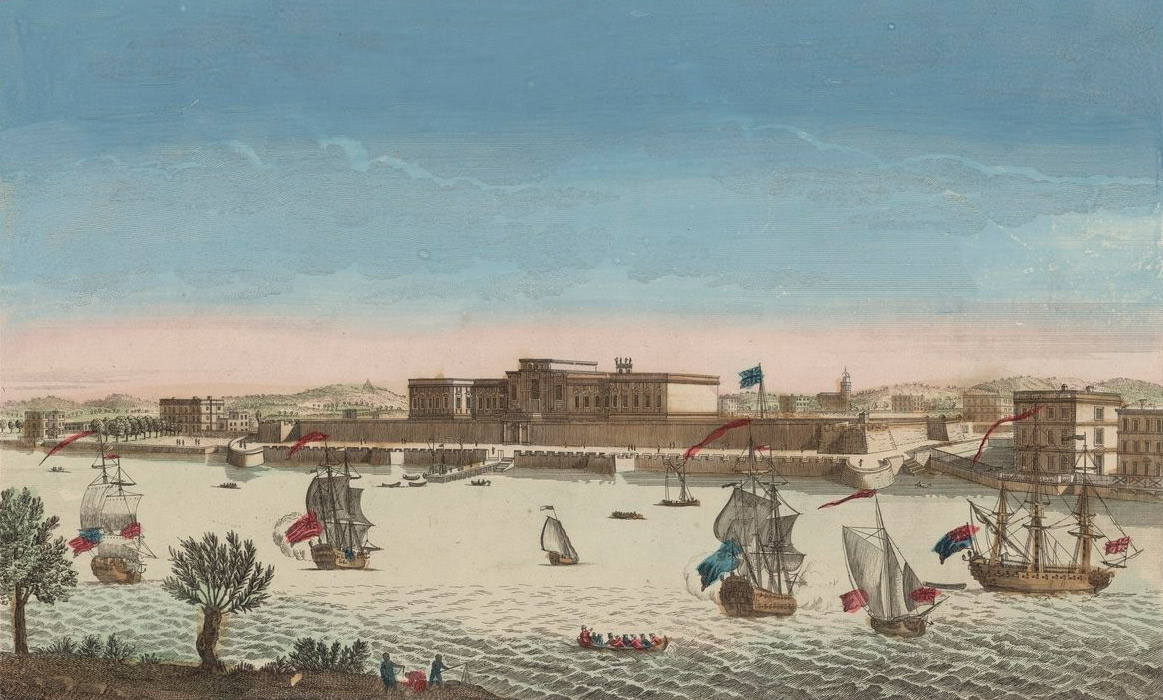
The island of Santa Appolonia, also called Mascarin, was visited by the British and the Dutch while sailing to India and it was the captain of the vessel Saint-Alexis who solemnly took possession of the island in 1638. In 1649, Flacourt, acting from Fort−Dauphin, named it île Bourbon (Bourbon island), “being unable to find a name that could more precisely express its generosity and fertility.” Bourbon became a profitable colony, thanks to a “colonial commodity” of choice: coffee. Economic expansion required a large workforce. Under the control of the French East India Company (1665-1767) and during the subsequent period of royalty, the origin of the slaves varied a great deal. Those of Indian origin came from Malabar coast, Bengal and Surat. Even though these were fewer in number than those coming from Africa or Madagascar, we cannot, however, say that their presence was anecdotal.
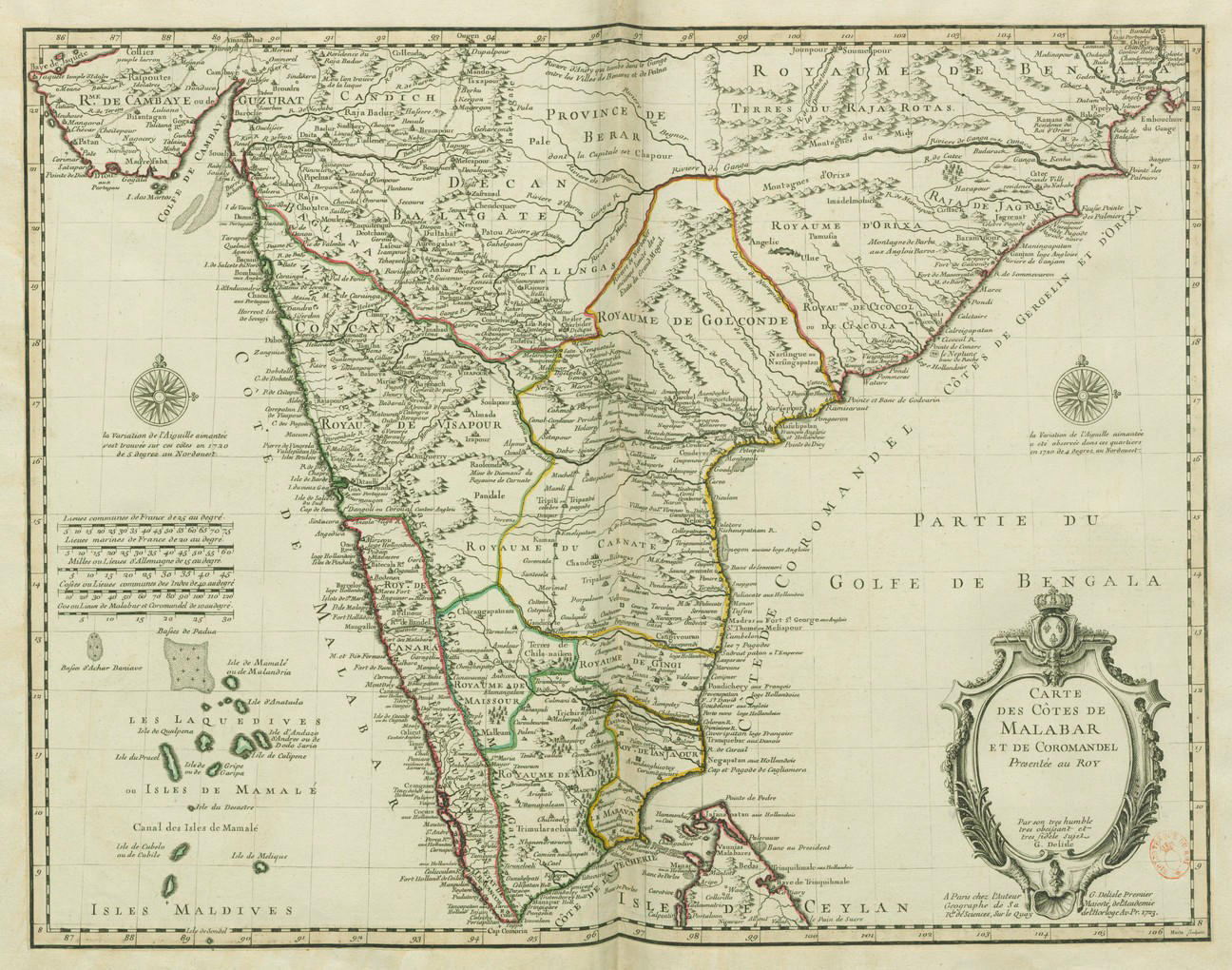
Alongside these enslaved Indians, free Indians played a role that was far from negligible in the economic, social and cultural landscape of Reunion and the Indian Ocean. Their history and “the identity markers greatly contributed, and still continues to contribute, to the wealth of Reunionese culture.” Taking an interest in the enslaved and free Indians in the society of Bourbon island of the 18th century leads us to a study of their specific identity, one of the components of the collective identity of Reunion.
Approaching the Indian culture of Bourbon island in the 18th century necessitates studying different elements of identity which, having a certain flexibility, could evolve or be assimilated with others, notably during changes of status in the society. Who were these Indians? Where exactly did they come from? How many were there? What were their names? What were the specific characteristics of the Indian slaves compared to the other ethnic groups? It is very interesting to examine their distribution by gender, age and distribution on the estates. Since their professional identity, a form of social identity developed through work, gradually evolved with the arrival of Indian workers and their allocation to specific professions, it would be artificial to separate identity and professional status. That is why any conclusion concerning the construction of professional identity reflects one of the elements of their identity as such.
The spatial distribution of the Indian population in the 18th century, the professional distribution and their places of residence, all provide explanations for the geographic distribution of persons of Indian origin on the island today.
Finally, the relations between individuals, as well as the social spaces, contribute to a modification of our vision of this population during the 18th century.
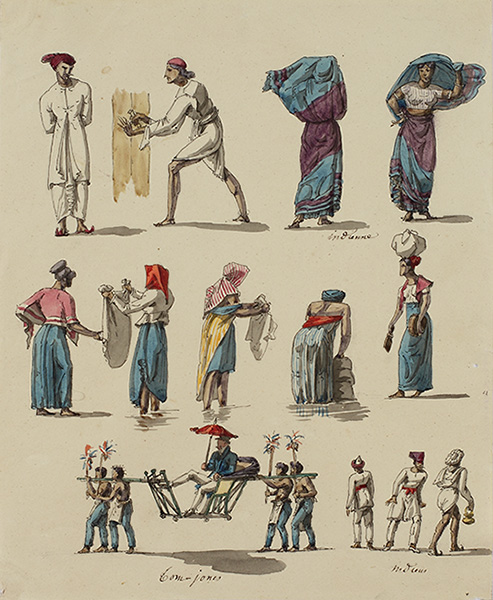
French vessels that had sailed out of the Indian peninsula and were on their way back to France would stop at Bourbon island to unload goods and slaves. The latter, considered to be “sober, faithful, docile, handsome and intelligent”. In November 1672, the ship Jules unloaded 15 “Good natured” prisoners, 12 of whom were still alive 10 years later.
Recruiting Indians as slaves was not always easy. Fluctuating throughout the century depending on the influence of France in the peninsula, it came up against opposition from indigenous princes, with the result that numbers were low. They were sometimes sent to Bourbon island as gifts to individuals; a few free but undisciplined Indians were also sent as slaves by the authorities of Pondicherry, who wished to get rid of them.
In 1708, the 51 Indian slaves of the colony represented 20% of the servile population. In 1765, the 1,100 individuals represented a mere 5%. In 1722, there were 116 Indian slaves in Saint-Paul. Seven years later, the governor Benoît Dumas brought back from Pondicherry 300 Indians, both free workers and slaves coming from Bengal, as well as from the coast of Coromandel, to work on the production of coffee. Between 1728 and 1731, 100 or so Indian slaves disembarked on the islands each year, selling their labour to escape from famine.
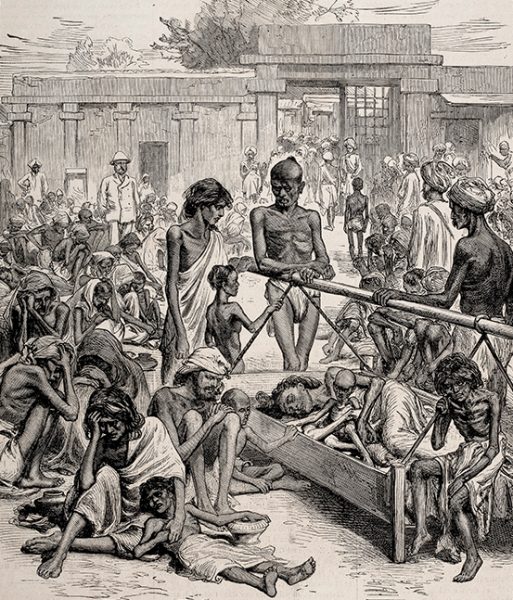
From the period of royalty (1767-1792), the group of free labourers increased in number. The royal administrators encouraged emancipation of slaves, but since the settlers on the island needed a work force, emancipation was not encouraged by the French East India company.
During the revolutionary period, the servile workforce traditionally provided by India to work in the islands was reduced to just a few dozen individuals, mainly from Bengal. The numbers dropped, as can be seen by study of the censuses, which list 238. When sugar cane started to be grown in the colony, there were very few Indians on the sugar estates. The drop in the number of the Indians among the servile population at the start of the 19th century was the combined result of the policy of emancipation, deaths among the ageing population, as well as a decrease in recruitment on the Indian peninsula.
The composition of the Indian population, distributed by age and gender, differed throughout the period. Individuals aged under 20 made up one third of the population (32.9 %), adults between 20 and 54 composed almost two thirds (64.7 %), and persons aged over 55 represented 2.4%.
In all the age groups, there were more men than women. In 1709, women represented only one fifth of the servile population from India. They were mainly aged between 15 and 25. The gap between the genders then decreased: in 1708, men represented 78.8 % and women 21.2 %, while in 1765, men made up 51.7 % and women 48.3 %. In certain areas of the island, the tendency was reversed. In Saint-Benoît and Saint-Pierre, for example, women were in the majority. As from 1796, the tendency was once more reversed, with a greater number of men than women.
Free Indians were present on the island as from the end of the 17th century. During the following century, they were hired by individual employers. From 1665 to 1767, the French East India Company hired free Indians to work alongside the slaves.
On Bourbon island, the population of free Indians belonged to the “group” of free coloureds. This group was not homogeneous. Many of them were former slaves who had been emancipated, and others, of whom there was a fairly large number, were hired to work on the estates or serve in the towns on premises belonging to the owners. These Indians, separate from the slaves, were guaranteed a salary and passage home at the end of their contract. Some were hired as labourers, in exchange for a monthly salary and food, while others were sailors. For the 18th century, the rather laconic censuses do not enable us to draw up a precise list and it appears that their numbers were low. From 1708 to 1797, on the basis of the legible documents in the archives, we can identify 147, consisting of 97 men and 50 women. At the end of the century, the numbers sent from India dropped considerably and on the island the group was characterised by an ageing population.
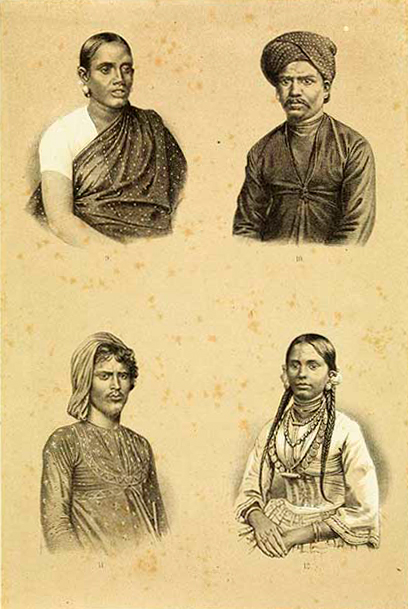
On Bourbon, as in other slave societies, the names given to slaves acted as supports for domination and submissiveness to the colonial social order, going hand-in-hand with the process of depersonalisation. Very few Indians retained their original names. Their names reflect the cultural influences of their masters.
Their names correspond to adjectives, (Modeste, Joyeux, Vaillant, Charmant: Modest, Joyful, Valiant, Charming), names of objects (Chaise, Tabouret: Chair, Stool), elements of the calendar (Janvier, Juin, Jeudi, Automne: January, June, Thursday, Autumn), professions (Berger, Messager: Shepherd, Messenger), Geographic locations (Paris, Vienne, Bruges: Paris, Vienna, Bruges) or connected to the revolutionary period (Florantine, Floréal).
As regards the free Indians, amongst others, they were called Moutou, Chavry, Vira or Langata. The majority of the names were Tamil and generally linked to the divinities (RANGA, NAGAPA, RAMALINGA, TANDRAYEN, TANAMOUTY, CALIAT, CHARIAPAMESTRY). Certain patronymics refer to holy places (TIRIMOULU) or qualities (ARIAPA: “Benevolent Lord” TAYLA: “Graceful Person”).
However, children born in the colony were often given Christian names, through an attempt at integration, but also when they were converted to the Catholic religion.
The development of the island in the 18th century necessitated a large work-force. The settlers adopted the solution of slave-labour. The slaves were mainly employed in the fields to work the land or as labourers. Contractual workers taken on in the colony had various professions. Over 70% were masons (Virapa, Raquilous, Chopé Commera, Chavria), blacksmiths and domestic workers (waiters, cooks, laundry workers, stable boys). Other professions were exercised, but less frequently. Jean-Baptiste VIRAPA worked as a jeweller in Saint-Denis. CHAVRIAPA declared himself to be a “Malabar taylor”, Jean-Louis ALADI was harbourmaster and AZY even worked on constructing rowing boats for the king. These professions were often also exercised by former Indian slaves who had been emancipated. Following their emancipation, many of them remained at the service of their former masters, carrying out the same functions.
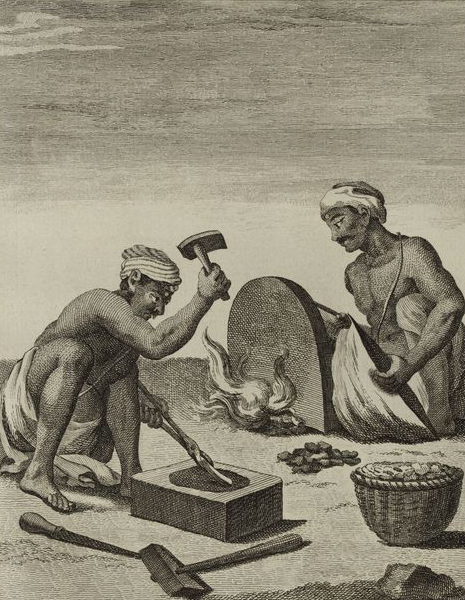
The location of the Indian slave population depended on the districts and the landowners. Analysing where they lived involves listing the estates and urban locations of the owners.
In the early 18th century, Saint-Paul, the first district to be settled, with 670 persons in 1711 (representing 65.4 % of the total population) also represented over half of the island’s servile population (53.7 %). This was also the district having the largest proportion of Indian slaves, with 46 listed (54.3 %). Saint-Denis came second, with 35 (41.3 %) and Sainte-Suzanne third with 4 (4.4 %). In 1735, the highest proportion was in Sainte-Suzanne (47 %), compared to Saint-Denis (30 %) and Saint-Paul (23 %). The windward side of the island saw an increase in the number of slaves, achieving as much as 79% of their numbers in 1778. Ten years later, following the creation of new districts, the distribution was as follows: Saint-Denis, 25 %; Saint-Benoît, 21 %; Saint-Paul, 16 %; Sainte- Suzanne, 11 %; Sainte-Marie, 11 %; Saint-Pierre 10 %; Saint-Joseph, 2 %; Saint-Louis, 2 %; Saint-André, 2 %.
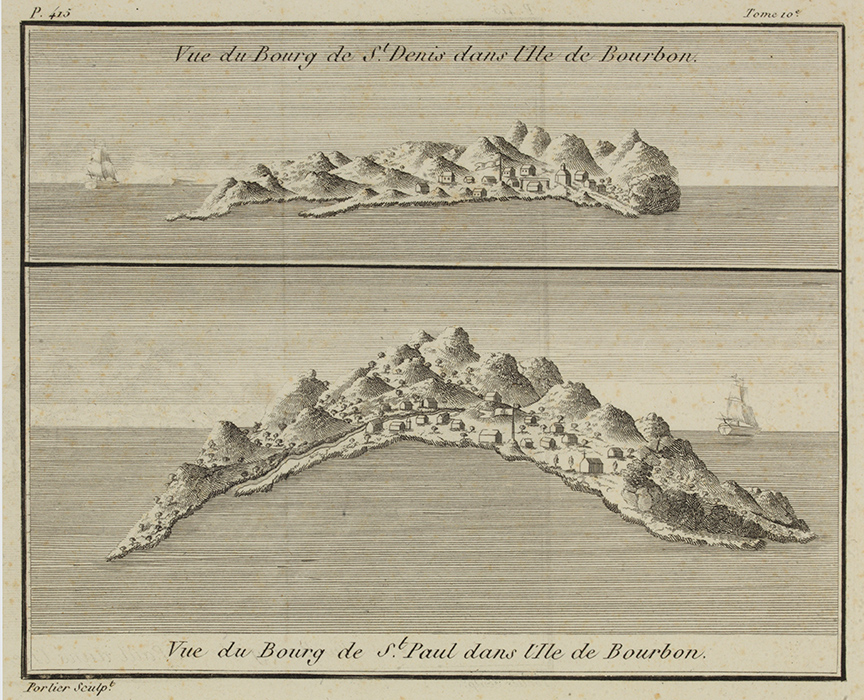
Free workers lived on their employers’ estates. Until 1759, they were distributed between the three existing neighbourhoods: Saint-Denis (34 %), Saint-Paul (30 %) and Sainte-Suzanne (36 %). During the following period, they were mainly concentrated in Saint-Denis (63 %), Saint-Benoît (21 %) and in the areas around Saint-André, Saint-Paul and Saint-Pierre (5.3 % each). Finally, at the start of the revolutionary period, the colonial administration showed greater flexibility as regards emancipation and the number of free workers increased. Emancipated Indians were mainly concentrated in Saint-Denis. In the 18th century, the first free Indians to own land were women married to settlers. They settled on such concessions because these were granted to their husbands on condition that they exploited the land.
In Saint-Denis, the area of land occupied by these free Indians, either as a result of a donation on emancipation, or following a purchase, varied a great deal. In the majority of cases, it was below 500 m2 and even below 100 m2. However, in the more remote districts, some of the plots of land were of considerable size (10,7 % were over 10 000 m2).
The different sizes of the plots occupied, both in the town and on the outskirts – sometimes referred to as ha some referred to as the suburbs – highlights the diversity of the situations of these free coloureds, both men and women. Whether they had a small plot or managed large areas of land, each in their own way they managed to survive. They had the will to carve out a place for themselves in the economic and social structure of the colony.
The dwellings occupied by the slaves are generally not described in the documents in the archives, since the masters considered these to be very basic. Sometimes, it was the slaves themselves who would construct these. Between a derelict storeroom no longer used by the master and huts made of latanier palm, very often with a roof of leaves or made with the remains of material used in the construction of the main house, with a single opening and insufficiently ventilated, these “Africans’ houses”, “huts” or “sheds” were of very mediocre quality. The slaves would sleep on floor.
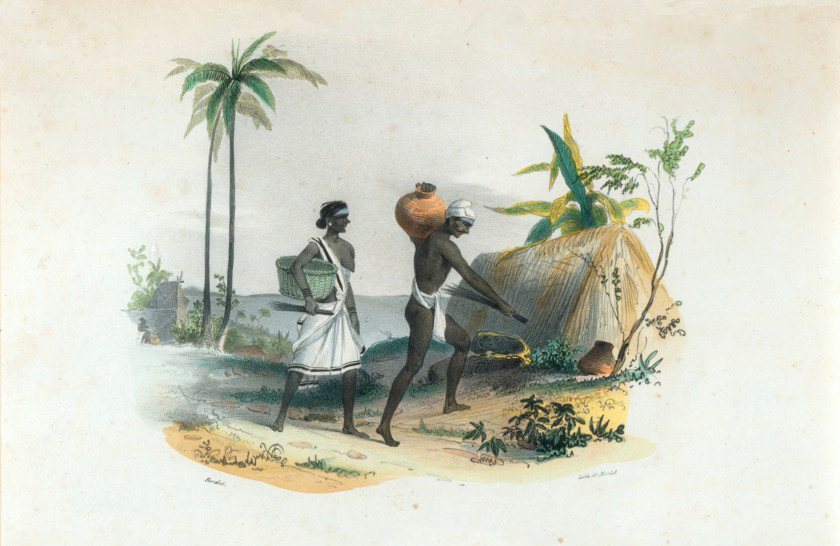
On the other hand, the lodgings occupied by the free workers were made of logs, coated timber or overlapping planks for solidity. A very small number of them were constructed using stone. The average area of the houses was around 60m2. The house sold to Azy by Pierre Taouchy on 31st October 1785, referred to as a mansion and covering an area of 304m2, was an exception. Very often, they had one or two rooms, where the family would eat and sleep. The space of the house was used for several purposes. The house was the living space. The few pieces of furniture consisted of chests, trunks and boxes, used for storing clothes and other belongings. The men’s wardrobe was limited to a few shirts and two pairs of pants, at the most. The house was also where they rested. The benches where they slept consisted of a mattress, generally stored in one of the chests, as well as a “rough blanket”.
The main room was where meals were taken. The crockery was very basic and there was no cutlery. Meals were eaten using your fingers and, like in India, people probably ate seated on the floor. There was no place for intimacy, particularly when the location included a single building.
The house was also a place of work. Indians living in the towns had a professional activity for which the workshop was located in the living space. A small room, adjacent or separate, would be used as a storeroom or space for keeping tools and materials. The large number of seamstresses would use these rooms for storing their cloths and fabrics.
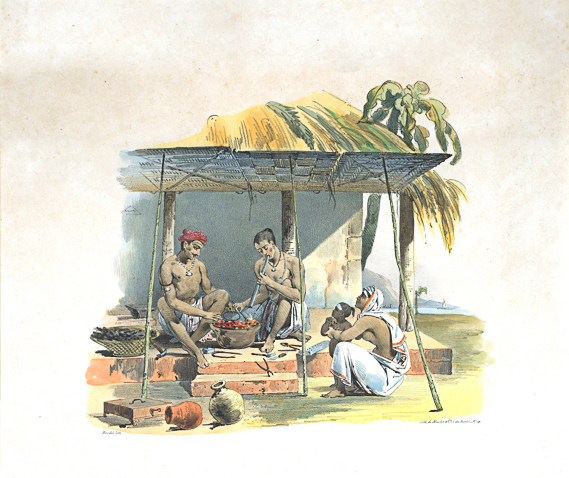
On Bourbon island, in the early period of settlement, marriages between whites and blacks were not forbidden. Mixed unions were part of the society. There was a noticeable imbalance between the genders.
Despite the monopoly of the Catholic religion on the island, the image of an exemplary form of Christianity is a myth. The first point of conflict was the resistance of the whites to the actions of the priests, resulting from the opposing interests of the settlers and the objectives of the clergy. Notably, how was it possible to accept the departure of a newly-married woman slave who wished to leave an estate to follow her husband going to work on a different property?
Nevertheless, until 1730, the Lazarist priests had positive results as regards marriages between members of the servile population. Only a few censuses register married Indian slaves. In Saint-Denis and Saint-Paul in 1708, in the listing provided by the masters, 6 men and 5 women are mentioned as being married. In 1725, it was 25 men and 15 women. Male Indian slaves preferred to marry Indian women. Of all the couples listed in the censuses, 66,6 % of the men were married to Indian women. Their second choice was Madagascan women, with 23.8%, and then African women with 9.6%.
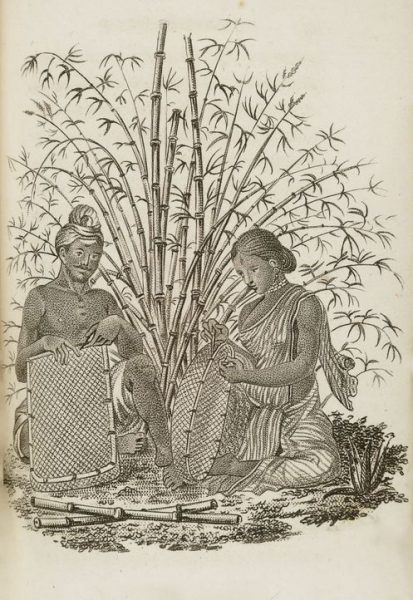
Cohabitation was only possible if the couple converted to the Catholic religion. There are few examples of cohabitation between free Indians and whites in the 18th century. The high degree of endogamy in the dwellings tended to strengthen group cohesion. Mixed marriages represented one fifth of the couples listed. Their unions mainly concerned Creoles, in general children of Indians, their preference was then followed by workers from Madagascar.
In the 18th century, Indian families were not homogenous. Married couples, single parents or extended families were the different types of the family that coexisted. Family groups, solidarity and mutual assistance were practised, with the aim of ensuring survival in a tough colonial society. Parents would accommodate their adult children or grandchildren, way beyond their 30th year. Children would house their parents, brothers and sisters, uncles, aunts and nephews. The administration of a large plot of land, with a large number of slaves working there, necessitated the presence of young persons capable of running the work-force. Young adults could not always afford to settle independently or have a dwelling to set up a family in their turn, in which case they would continue to live in their family, contributing as well as they could to the household, through financial contribution, help with household or agricultural tasks or in the workshop of the working parent. They might also take care of younger brothers and sisters, taking the place of the parents to look after them. In certain cases, they represented the only source of financial contribution to the household because the parents had grown too old to work, particularly if there was a large number of brothers and sisters.
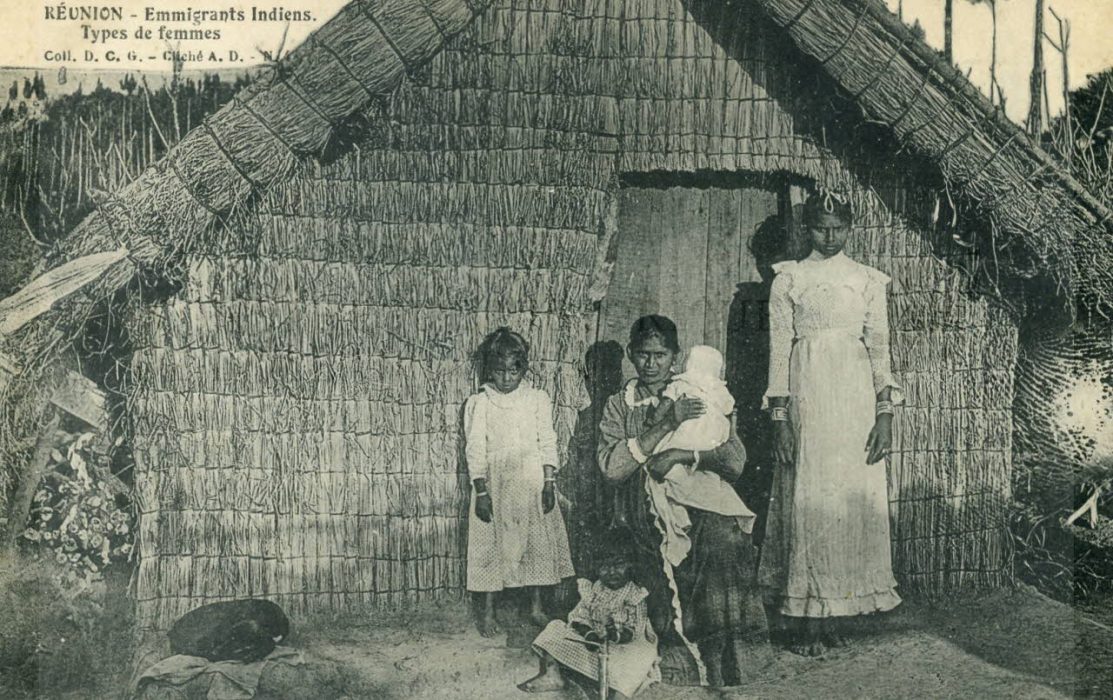
Photomechanical print (postcard): white & black.
Private collection of Jean-François Hibon de Frohen (1947-….)
The relationships between members of the Indian population on Bourbon Island show a high degree of solidarity in the face of the adversity of the colonial system. Slaves or free workers, the Indians arriving on this small island in the south-west of the Indian Ocean would do everything possible to become integrated into a culture that was foreign to them. During the following century, they asserted their own identity with the new indentured workers who arrived contributing to the diversity of the contemporary Reunionese population.